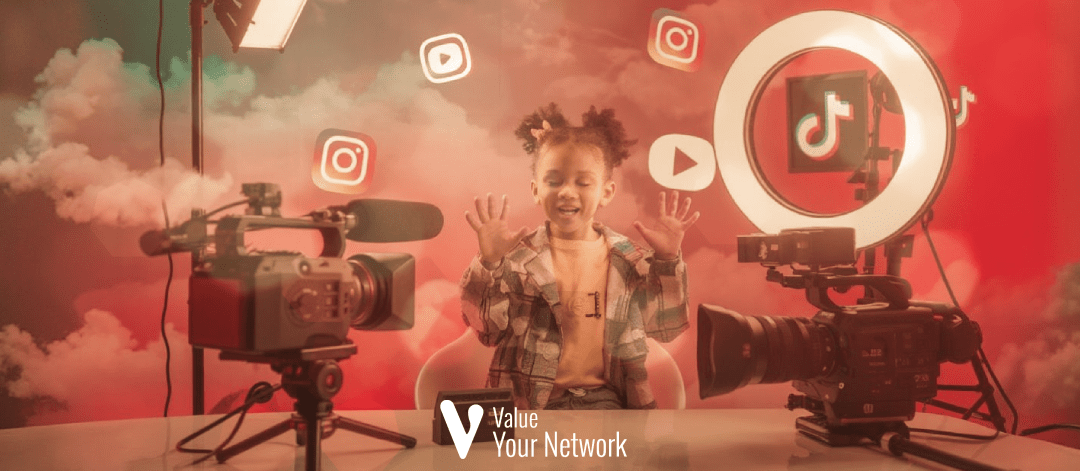The children influencersWhether they're on YouTube, TikTok, or Instagram, they've become iconic figures in influencer marketing. Their videos, often full of spontaneity and entertainment, attract millions of viewers and generate considerable revenue. But at what point do these activities become real work?
What are the associated risks and, above all, how can we protect them? young people stars of potential abuses? This article explores the phenomenon, its legal framework, and the shared responsibilities of parents, brands and platforms to guarantee their well-being.
The emergence of child influencers
A new form of employment
All child influencers Child influencers don’t just have fun in front of a camera. They actively participate in the creation of sponsored content and often follow carefully prepared scenarios. This activity, although it may seem fun, is similar to a job as soon as it generates income or involves a professional organization.
Definition of child influencer
A child influencer is a minor who participates in the production and dissemination of sponsored content (publications, videos or lives) on social networks. These children sometimes become the main figures in their family, as is the case with popular channels such as Swan & Neo or BabyChou Family, which generate millions of euros through their activities.
The border between leisure and work
When video production becomes regular and paid, the simple family hobby becomes a regulated professional activity. This blurred boundary requires clear regulation to avoid any abuse.
Risks and abuses for children
Media exposure
Prolonged exposure of children to networks can have negative consequences on their psychological development. Risks include fatigue, stress and invasion of privacy. Cases of cyberbullying show how harmful this overexposure can be.
External pressures and drifts
Some brands impose a hectic pace or repetitive scenarios that can harm the child's well-being. Extreme examples, such as that of Ruby Franke, reveal how abuse can go unnoticed behind supposedly innocent content.
The French legal framework for protecting children
The legislative bases
Visit law n°2020-1266 and the Decree No. 2022-727 now regulate the commercial exploitation of the image of minors. These texts aim to protect children under 16 by applying to them a status similar to that of child models or artists.
Obligations for children under 16
- Prior authorization : Parents must obtain authorization from DREETS.
- Blocked remuneration : 90 % of income is deposited with the Caisse des Dépôts until the age of majority.
- Strict time limits : For example, a 3-year-old child cannot work more than 3 hours a day.
Status of minor influencers over 16 years old
From the age of 16, minors can sign an employment contract validated by their legal representatives, while respecting their school obligations.
Shared responsibilities in protecting the child influencer
Role of parents
Parents must ensure their child's psychological health, manage income in accordance with the law, and report any form of stress or abuse.
Role of brands and influencer agencies
Brands have an obligation to sign legally compliant contracts and ensure that working conditions meet ethical and legal standards.
Role of platforms
Platforms must moderate content, apply the right to be forgotten and raise awareness among content creators about protecting children.
Best practices for responsible collaboration
- Respect for fundamental rights : Ensure the protection of privacy and respect for the child's rhythms.
- Parent awareness : Help them understand the issues and legal limits.
- Transparency of partnerships : Clearly inform audiences about sponsored collaborations.
Towards enhanced protection: Developments and perspectives
New bills, such as the one in February 2024, seek to strengthen children's image rights and prohibit the dissemination of content without the informed consent of both parents. At the same time, associations such as e-Childhood play a key role in digital education.
The phenomenon of child influencers has transformed the dynamics of marketing and childhood. Although regulated by specific laws in France, it remains essential that all stakeholders – parents, brands, platforms and Internet users – collaborate to ensure their well-being. The future depends on increased vigilance and continuous adaptation of legislative frameworks to preserve the balance and rights of children in this digital universe.

